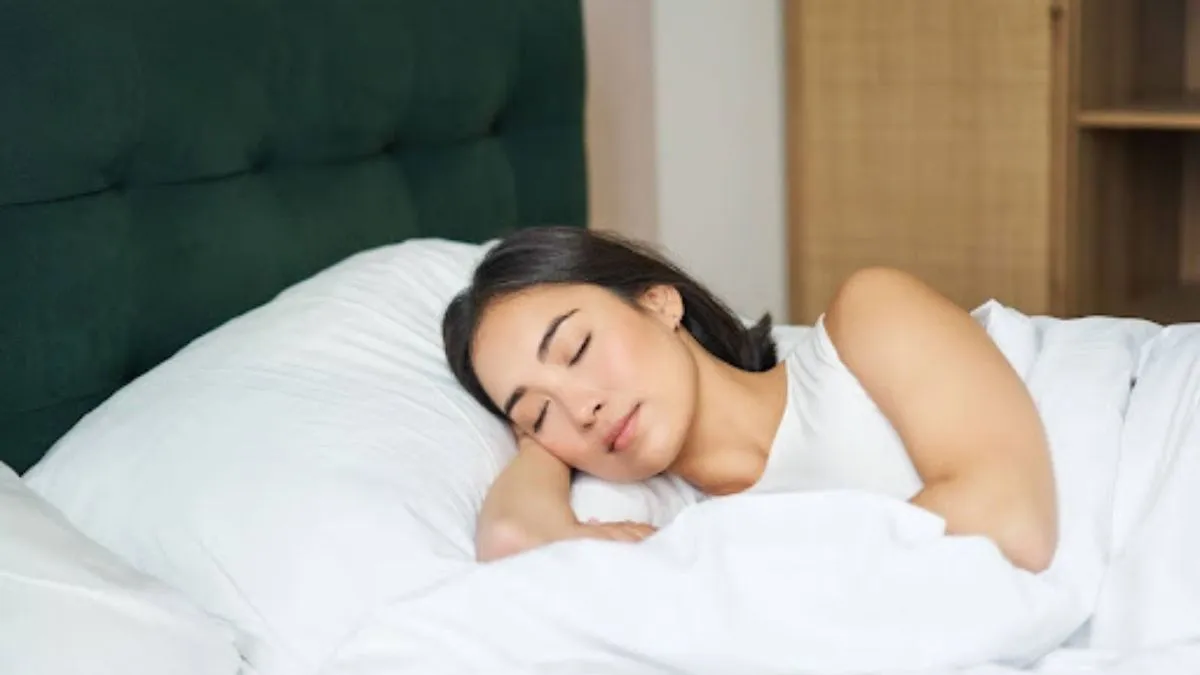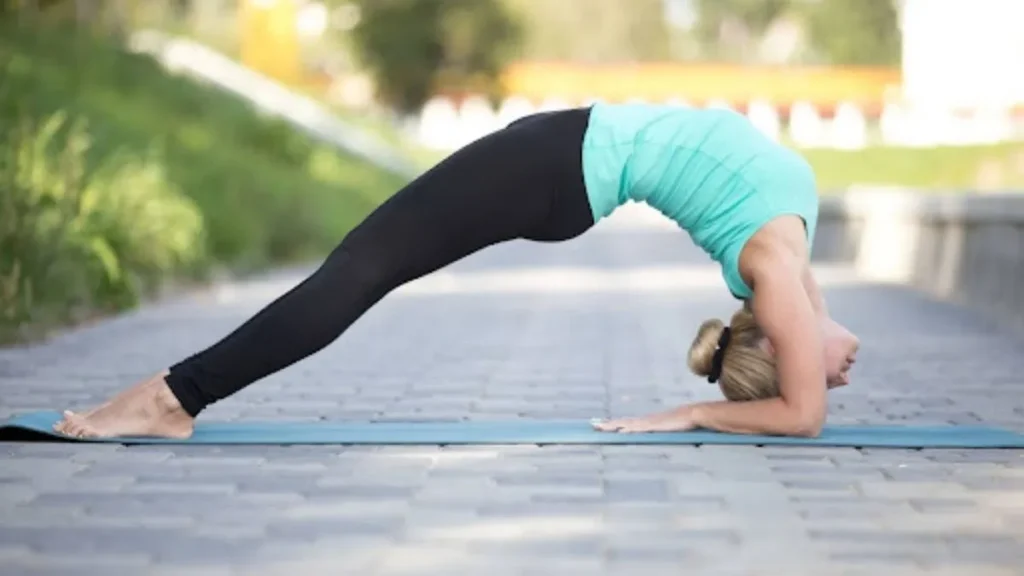HEALTH AND FITNESS
Yoga and Sleep Solutions for Natural Sleep Apnea Relief

Imagine waking up truly refreshed your energy levels boosted and your overall health improving. This post explores a powerful partnership how the ancient practice of yoga works in harmony with sleep solutions to naturally relieve sleep apnea symptoms.
Ready to breathe easier sleep deeper and reclaim your nights? Keep reading to discover the scientific reasons behind this powerful mind body connection and the simple effective techniques you can start using today to transform your sleep health.
Table of Contents
Yoga & Sleep Apnea
To understand why yoga is an effective ally, you need to know what happens during an apnea event. Obstructive sleep apnea is measured by the apnea-hypopnea index (AHI), which calculates how often your breathing stops or becomes shallow. Each event causes a drop in blood oxygen, jolting you out of deep sleep, even if you don’t fully awaken.
The condition is quite common. Studies show the prevalence of obstructive sleep apnea (OSA) is a mean of 22% in men and 17% in women. When associated with excessive sleepiness, it affects approximately men than of women in the general population.
While yoga serves as a powerful complementary approach understanding medical devices is also key. Traditional treatments like CPAP machines are highly effective, and navigating the options can be overwhelming.
For those looking to understand the equipment landscape, comprehensive resources like RespShop’s effective sleep solutions offer clarity on finding the right fit for individual needs.
Emerging research validates yoga’s role in this integrated approach. A landmark randomized controlled trial showed compelling results. Researchers credited three main mechanisms for these improvements:
Strengthening Of Pharyngeal Muscles
The muscles at the back of the throat are responsible for keeping the airway open. Controlled breath holds and specific vocalizations in yoga act like strength training for these crucial tissues, making them less prone to collapse during sleep.
Enhanced Diaphragmatic Mobility
Proper breathing originates from the diaphragm. Yoga trains this primary respiratory muscle to move more efficiently, which in turn helps keep the upper-airway tissue stable and less likely to vibrate or obstruct.
Vagal-Nerve Stimulation
Many yogic practices, particularly slow breathing and humming, activate the vagus nerve. This tones down the sympathetic “fight-or-flight” response and engages the parasympathetic “rest-and-digest” system, easing the body’s transition into peaceful sleep.
| Key Insight: Yoga tackles sleep apnea by strengthening airway muscles, improving diaphragm efficiency, and calming the nervous system. It’s a holistic approach that addresses both the physical and neurological sides of the condition. |
Postures that Promote Airway Patency
Apneas often occur when the muscles of the throat relax excessively during sleep, allowing soft tissue like the tongue and soft palate to obstruct the airway. The following yoga postures are specifically chosen to counteract that collapse by expanding the chest and strengthening postural muscles.

Bridge Pose (Setu Bandha Sarvangasana)
This pose creates a gentle inversion that elevates the chest above the head, opening the thoracic cavity. It also actively recruits key muscles in the neck, which are stabilizers for the upper airway. A stronger, more toned neck structure provides better support against tissue collapse.
Lie on your back with your knees bent and feet flat on the floor, hip-width apart and close enough that you can touch your heels. Press through your feet to lift your hips off the floor. Interlace your fingers underneath your body, rolling your shoulders under to further lift the chest. Hold for 5 deep breaths.
Cobra Pose (Bhujangasana)
Modern life often leads to a forward-head posture, which can compromise airway alignment. Cobra pose strengthens the posterior neck muscles and extensors along the spine, directly improving cervical alignment.
Lie on your stomach with your forehead on the floor. Place your palms under your shoulders, hugging your elbows in toward your ribcage. On an inhale, press through your hands to lift your head, chest, and upper ribs off the floor. Gaze slightly forward and hold for 5 breaths.
Legs-Up-the-Wall (Viparita Karani)
While not a direct airway opener, this restorative posture is crucial for calming the nervous system. It enhances blood flow, reduces lower body swelling, and activates the parasympathetic nervous system. This helps lower heart rate and blood pressure, reducing stress-induced nighttime arousals.
Sit on the floor with one hip against a wall. Gently swing your legs up the wall as you pivot to lie flat on your back. Your torso should be flat on the floor and your sitting bones as close to the wall as is comfortable. Relax your arms out to the sides and stay for 3 to 5 minutes.
Complementary Sleep Solutions
Yoga is most effective when integrated into a broader strategy for sleep health. Here are five evidence-based lifestyle adjustments that work synergistically with your yoga practice to combat sleep apnea.

Maintain Healthy Weight
Excess weight, particularly around the neck, can lead to fat deposits that physically narrow the airway, a primary risk factor for OSA.
Optimize Sleep Position
Sleeping on your back allows gravity to pull your tongue and soft palate backward, making airway obstruction more likely. Shifting to side-sleeping is one of the simplest and most effective behavioral changes you can make. To enforce this, try using a full-body pillow to create a physical barrier that discourages you from rolling onto your back.
Use a Humidifier
Dry air can irritate the nasal passages and throat, leading to inflammation that can worsen obstruction. Running a humidifier in your bedroom at night adds moisture to the air, which helps to keep these delicate tissues hydrated.
Avoid Alcohol & Smoking
Alcohol is a muscle relaxant. Consuming it before bed can cause the throat muscles to become excessively slack, dramatically increasing the frequency of apnea events. Smoking is a direct irritant that causes inflammation in the upper airway.
Consider Oral Appliances
For some individuals, particularly those with mild-to-moderate OSA, a custom-fitted oral appliance can be a viable alternative or adjunct to CPAP. These devices work by gently moving the lower jaw forward. This repositioning helps to tighten the soft tissues at the back of the throat and keep the airway open, effectively reducing snoring.
| Key Insight: These lifestyle changes create the foundation for better sleep. When combined with a consistent yoga practice, their effects are amplified, creating a powerful, multi-faceted strategy to reduce apnea events and improve overall sleep quality. |
Breathe Easy, Sleep Deep
Yoga offers a rare two-for-one punch against the challenges of obstructive sleep apnea. On a physical level, it methodically trains the muscles that keep your airway open. Neurologically, it expertly dials down the stress hormones and sympathetic nervous system activation that sabotage deep, restorative sleep. Listen to your body, be consistent, and notice the small changes. Your story might be the spark of inspiration the next reader needs to take control of their restless nights. Sleep well and breathe easy.
-

 GENERAL6 months ago
GENERAL6 months agoChristofle – For Those Who Dream of Family Heirloom Silver
-

 SPORTS8 months ago
SPORTS8 months agoDiscover the World of Football with Streameast: Watch Your Favorite Leagues and Tournaments
-

 GENERAL4 months ago
GENERAL4 months agoUncovering the World of кинокрадко: The Dark Side of Film Piracy
-

 GENERAL2 months ago
GENERAL2 months agoATFBooru: Anime, Gaming, and Subculture Imageboard























